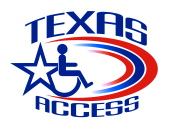What Is the Current State of Web Accessibility?
The current state of web accessibility is a mixed bag. On one hand, web accessibility has greatly evolved since 1964. There has been a growing awareness and understanding of the importance of web accessibility in recent years. Many organizations have made efforts to improve the accessibility of their digital products, and there have been some notable successes in this area.
However, there is still a long way to go. A lot of websites and digital products are still not fully accessible, which can make it difficult or impossible for people with disabilities to use them. This is particularly true for people with cognitive impairments, who may have difficulty understanding complex content or navigation.
There are also still many barriers to the widespread adoption of web accessibility, including a lack of awareness and understanding about the importance of web accessibility, a lack of resources and funding for organizations to implement new accessibility features, and a lack of technical expertise among developers and designers.
Additionally, there is a lack of enforcement of web accessibility laws and regulations. Even though some countries have laws and regulations to ensure that digital products are accessible, these laws are not always enforced, and organizations can get away with not complying with them.
The Future of Web Accessibility

Predictions for the evolution of web accessibility technology include the adoption of new accessibility guidelines, such as Web Content Accessibility Guidelines (WCAG) 3.0, which are more comprehensive and user-centered than their predecessors. Although WCAG 3.0 is still being drafted, it aims to provide more guidance on using new technologies such as AI and machine learning to improve accessibility, allowing for more personalized and dynamic experiences for users.
Emerging technology and advancements in web accessibility include voice recognition, eye-tracking, and haptic feedback. These technologies can help people with disabilities to interact with digital content in new and innovative ways. For example, a website that uses haptic feedback can provide users with information about the layout of a page through vibrations, making it easier for those who are visually impaired to navigate.
Potential challenges and barriers to the widespread adoption of new web accessibility technology include a lack of awareness and understanding about the importance of web accessibility, as well as a lack of resources and funding for organizations to implement new accessibility features. Additionally, there may be a lack of technical expertise among developers and designers, which can make it difficult to create truly accessible digital products.
To overcome these challenges, it will be important for governments, organizations, and companies to prioritize web accessibility in their digital strategies. This could involve setting accessibility goals, allocating resources to implement accessibility features, and providing training and education for developers and designers. Additionally, it will be important to raise awareness and educate users about the importance of web accessibility, as well as encourage them to demand more accessible digital experiences.
Another important factor in the future of web accessibility is the growth of the Internet of Things (IoT) and the increasing number of connected devices. This will create new challenges and opportunities for web accessibility, as these devices will need to be accessible and usable by people with disabilities. Companies will need to take into account the unique accessibility needs of users when developing connected devices, such as incorporating voice control, tactile buttons, and other accessibility features.
Finally, it is important to note that web accessibility is not just a matter of compliance with laws and regulations, but a human right. As more people with disabilities rely on the web for information, education, work, and communication, the web must remain accessible to all. By prioritizing web accessibility, we can create a more inclusive and equitable digital world for everyone.
The future of web accessibility is bright, with many exciting new technologies and advancements on the horizon. However, it will take the collective effort of governments, organizations, and companies to ensure that these technologies are widely adopted and used to create truly accessible digital experiences for people with disabilities.
The Role of Equally AI in Shaping the Future of Web Accessibility

Equally AI is a company that is dedicated to making the web accessible to everyone. Their mission is to create cutting-edge technology that can help people with disabilities to navigate the digital world with ease.
They offer a range of innovative web accessibility solutions, including AI-powered accessibility software and accessibility testing tools. These tools can help organizations identify and fix accessibility issues on their websites and applications, making them more usable for people with disabilities.
The impact of Equally AI’s technology on the web accessibility industry is significant. Their solutions have helped organizations to improve the accessibility of their digital products, which in turn has helped to make the web a more inclusive and equitable place.
⚡ Want to know more? Read Equally AI review
Testimonials from clients and partners of Equally AI speak to the effectiveness of their technology. One client said,
“I am not a professional web developer yet as a small business owner of a production company I need my website to perform well for all website users and I have to manage my website with easy-to-use tools that are also affordable. Equally AI empowers me to do this and achieve website accessibility.”
Equally AI recently launched Flowy, the world’s first ChatGPT-powered web accessibility platform for developers and website owners. Flowy uses ChatGPT’s natural language processing to automatically detect and fix accessibility issues on websites and digital products and guides creating more inclusive and accessible products. The platform aims to improve web accessibility and ease compliance with WCAG 3.0 for developers and website owners.
Conclusion
The future of web accessibility is bright, with the potential for new and innovative technology to improve the digital experience for people with disabilities. Equally AI is a leader in this field, with its cutting-edge technology and solutions helping to make the web more accessible for all.
Companies and organizations need to prioritize web accessibility in their digital strategies, not only for compliance but also to create a more inclusive and equitable digital world.







